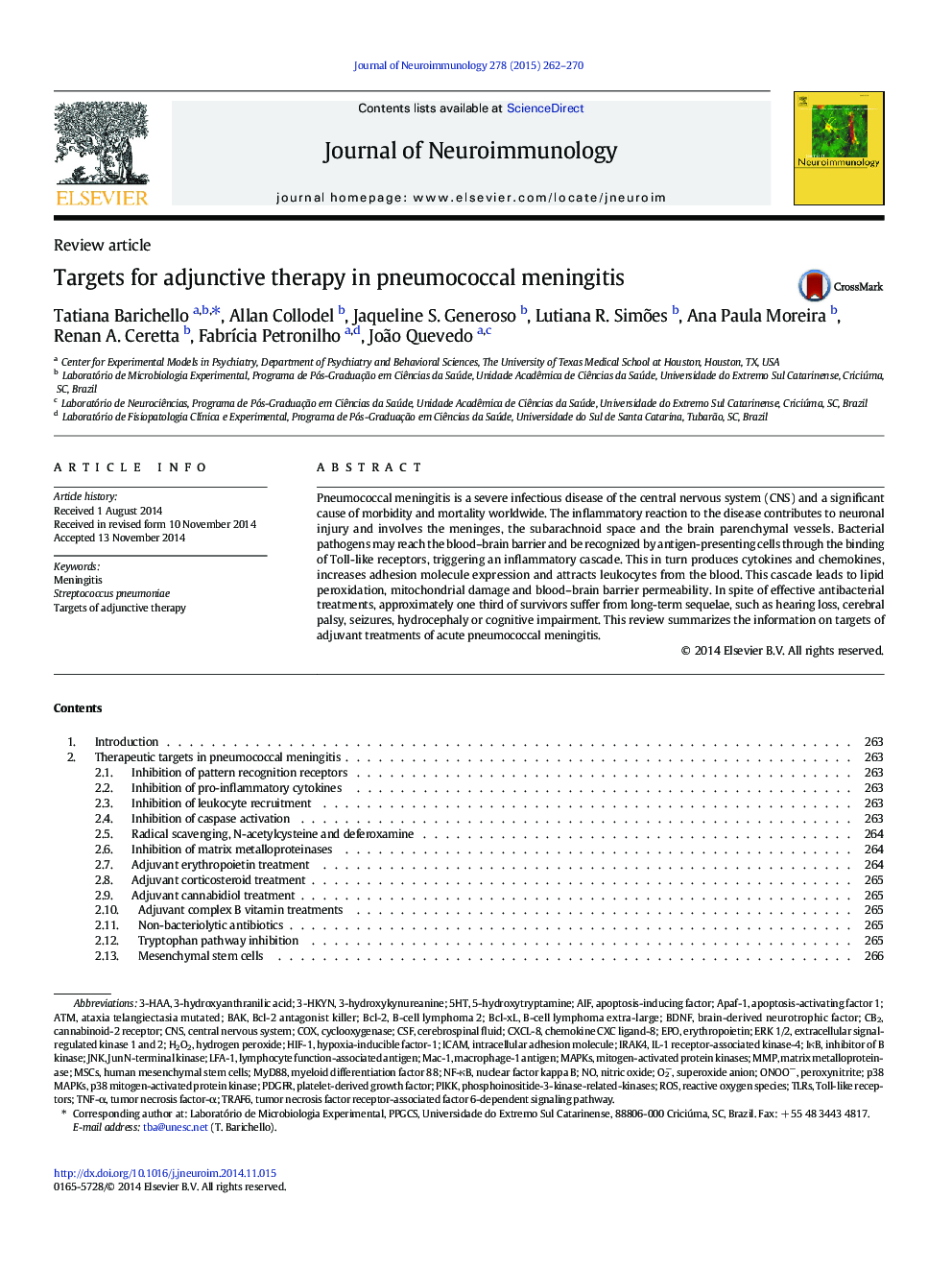| کد مقاله | کد نشریه | سال انتشار | مقاله انگلیسی | نسخه تمام متن |
|---|---|---|---|---|
| 6020310 | 1580396 | 2015 | 9 صفحه PDF | دانلود رایگان |
- Review about therapeutic targets in pneumococcal meningitis
- Relevant pathophysiological steps of pneumococcal meningitis
- Study of new therapies is needed to improve the prognosis of bacterial meningitis.
Pneumococcal meningitis is a severe infectious disease of the central nervous system (CNS) and a significant cause of morbidity and mortality worldwide. The inflammatory reaction to the disease contributes to neuronal injury and involves the meninges, the subarachnoid space and the brain parenchymal vessels. Bacterial pathogens may reach the blood-brain barrier and be recognized by antigen-presenting cells through the binding of Toll-like receptors, triggering an inflammatory cascade. This in turn produces cytokines and chemokines, increases adhesion molecule expression and attracts leukocytes from the blood. This cascade leads to lipid peroxidation, mitochondrial damage and blood-brain barrier permeability. In spite of effective antibacterial treatments, approximately one third of survivors suffer from long-term sequelae, such as hearing loss, cerebral palsy, seizures, hydrocephaly or cognitive impairment. This review summarizes the information on targets of adjuvant treatments of acute pneumococcal meningitis.
Journal: Journal of Neuroimmunology - Volume 278, 15 January 2015, Pages 262-270
